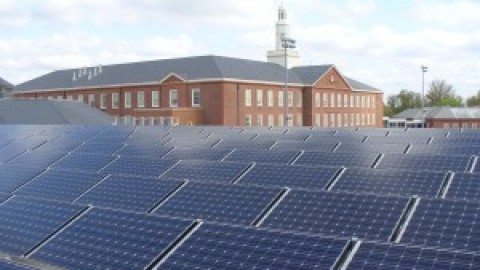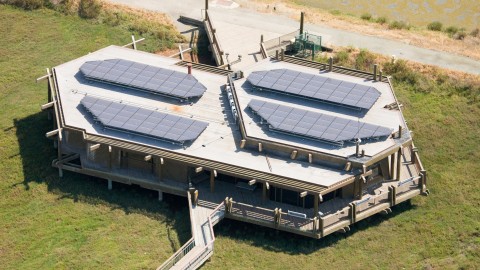Participant Highlight
ASTI Newsletter | August 2014 Edition | By Rachel Liesching
Far away from the East Coast’s renewable energy certificate markets and the cleantech capital of Silicon Valley, a handful of local governments in Utah are quietly—and quickly—becoming leaders in promoting clean energy development. The state itself has a voluntary goal of generating 20% of its electricity from renewable sources by 2025, but Summit County and its largest city, Park City, have set their own ambitious agendas related to energy efficiency and distributed energy generation, encompassing fee waivers for solar PV system inspections and the County’s progressive two-year sustainability plan. Since joining the American Solar Transformation Initiative (ASTI) and the Solar Roadmap in April, the City and County have both made outstanding progress towards achieving their solar market development goals in four short months, including establishing a collaborative solar procurement program for local government facilities.
As Park City’s Environmental Project Manager Matt Abbott describes, the City and Summit County have a long-standing and productive working relationship, so much so that he regularly meets with his counterpart, Sustainability Coordinator Lisa Yoder, for lunch. In 2013, Park City and Summit County partnered with Utah Clean Energy to initiate Summit Community Solar, a group purchasing program that resulted in 59 residential solar installations totaling 330 kW of new installed capacity.
Under Optony’s guidance, Park City and Summit County have joined forces once more to organize a collaborative procurement effort for its government owned facilities. As working groups begin to form, both governments have started to submit potential sites for review; not to mention, Solar Roadmap Goal M3, “Explore Implementation of Collaborative Procurement Program for Municipal Facilities”, has been marked off on each participant’s roadmap with a resounding “check”.

An 18.8 kW installation located on the roof of Park City’s City Hall. The City’s police station also features a solar PV system. Photo courtesy of Park City’s Office of Sustainability.
Summit County’s population is just over 36,000 people, some fifth of which live in Park City, a popular skiing destination and the home of the Sundance Film Festival. Matt explains that given the amount of carbon-intensive travel and tourism within Summit County, renewable energy and energy conservation are priorities for Park City’s Sustainability team. He acknowledges that Utah trails behind other states in terms of clean energy markets and policy, a fact that has made Park City especially motivated to draw upon Optony’s expertise to reduce soft costs and increase access to solar.
“The way that Optony approaches things works well with how I approach things,” Matt says. “I’d rather have a functional market than for me to just evangelize to our community about technologies, techniques, or strategies to go solar.”
Park City has wasted little time in tackling these market barriers. In addition to the newly initiated collaborative procurement effort, the City recently applied to compete for the $5 million Georgetown Energy Prize, a two-year contest between participating communities to reduce energy usage and adopt energy conservation measures.
Since joining the Solar Roadmap, Park City has also turned its attention to implementing process improvements related to permitting as well as planning and zoning. Their current systems’ weaknesses opportunities for improvement were highlighted during last year’s Summit Community Solar program.
“We did a lot to improve our permitting practices [prior to the program], but there’s nothing that improves a building department and a planning department like pushing 40-odd permits through in a summer,” Matt says. “We’re looking forward to systematizing those improvements over the course of ASTI… it’s a great way to structure the work our Building, Planning, and Sustainability departments need to do to achieve best practices.”
Matt also cites the Solar Roadmap as the ideal platform to coordinate permitting and fire safety inspection standards between the County and the City, another point of friction during last year’s group purchasing program.
The functional solar market that Matt aspires to establish may not be all too distant a goal. Summit County has reached 1 MW of installed solar capacity, while a recently approved project in Park City is expected to add another 200 kW. As both Solar Roadmap participants enthusiastically engage with ASTI’s wide range of opportunities to receive no-cost technical assistance, regional cooperation between the two governments, and the clean energy market itself, will only continue to strengthen.






